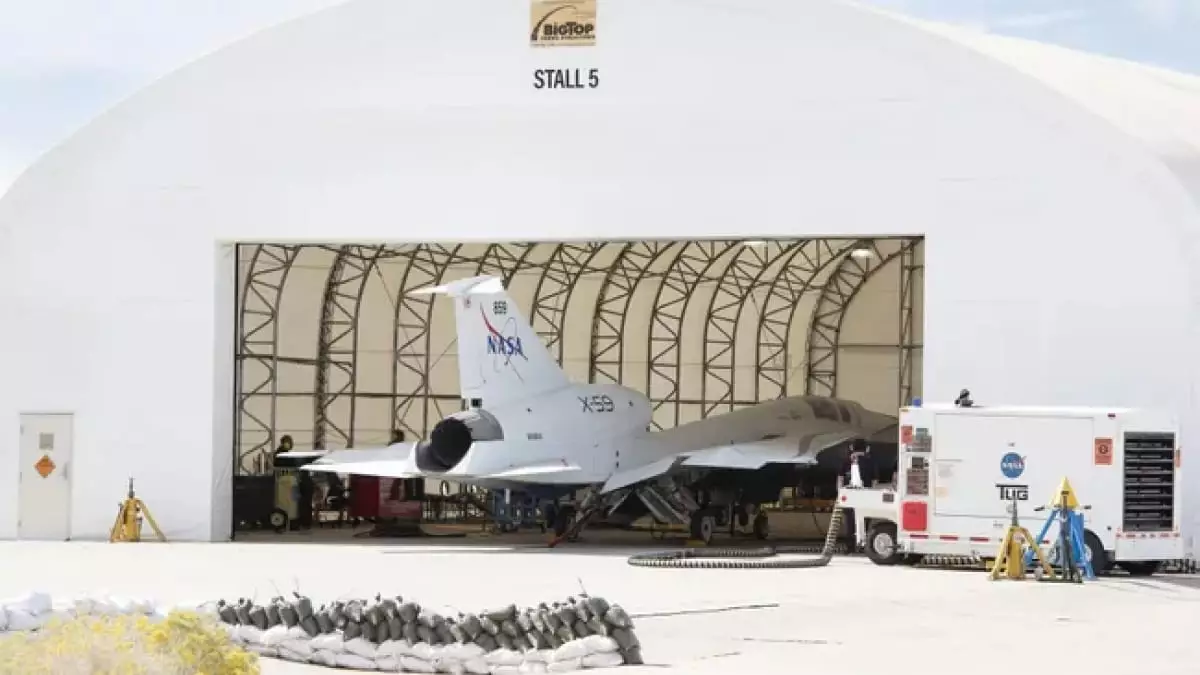NASA’s X-59 Quiet SuperSonic Technology (Quesst) aircraft represents a bold leap forward in the quest for quieter supersonic flight. Recently, the engineers at Lockheed Martin’s Skunk Works in Palmdale, California, celebrated a significant milestone when the aircraft’s engine was ignited for the first time. This marked a critical point in a series of phased engine tests that have been ongoing since late October, aimed at assessing the operational readiness and performance of the X-59 before it takes to the skies.
The engine testing was meticulously planned, starting with low-speed operations designed to identify any potential leaks and ensure that essential systems like hydraulics and electrical components function properly with the engine active. After these preliminary checks, engineers conducted a full power-up of the X-59’s engine, which is a modified version of the F414-GE-100 engine. This innovative design mirrors what is used in the U.S. Navy’s Boeing F/A-18 Super Hornet and is pivotal for achieving the aircraft’s intended capabilities.
NASA’s chief engineer for the X-59, Jay Brandon, described the initial engine tests as a vital “warmup,” ensuring that the engine supports critical aircraft systems effectively. This testing phase, while promising, comes without a scheduled date for the first official flight, though the anticipation grows as engineers inch closer to that groundbreaking moment.
One of the X-59’s main objectives is to alter the way sonic booms are perceived. Traditional supersonic aircraft are notorious for the disruptive noise they produce. However, the X-59 is designed to reach a cruising speed of Mach 1.4 at an operational altitude of 55,000 feet while producing only a mild “thump” sound. This radical change stems from its unique aerodynamic design, which includes a long, streamlined nose that extends over 11 meters. Such innovations have ignited hopes that future regulations could allow supersonic flights over populated regions without the concern of noise complaints.
To complement its physical design, NASA has utilized F/A-18 jets to model the X-59’s acoustics, predicting the sound levels it may emit during flight. This research will be crucial in demonstrating to regulators and the public that relaxed flight path restrictions can be safely and effectively instituted.
In January 2024, NASA showcased the X-59’s cutting-edge cockpit design, notably lacking a traditional forward-facing window. Instead of the conventional approach, pilots will rely on an advanced “eXternal Vision System.” This innovative technology blends camera feeds with augmented reality, providing pilots with the necessary visual information they need to navigate safely. Pam Melroy, NASA’s Deputy Administrator, emphasized the significance of this technology in addressing visibility challenges inherent in the aircraft’s design.
Looking ahead, the X-59 will undergo further testing, evaluating its performance under varied simulated scenarios. Ground tests are also planned to ensure its operational readiness on the ground. Once the X-59 makes its inaugural flight, it will fly over designated U.S. cities to gather public feedback on its quieter sound profile. The data collected will be instrumental in NASA’s mission to validate the feasibility of noise-minimized supersonic travel, potentially paving the way for commercial applications in the not-too-distant future.
The progress being made with the X-59 stands as a testament to technological advancement in aviation, with the promise not just of faster travel but of travel that can coexist more harmoniously with the communities it flies over.


Leave a Reply